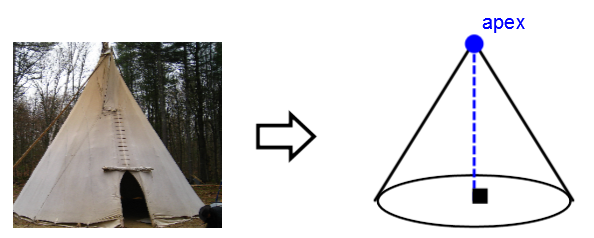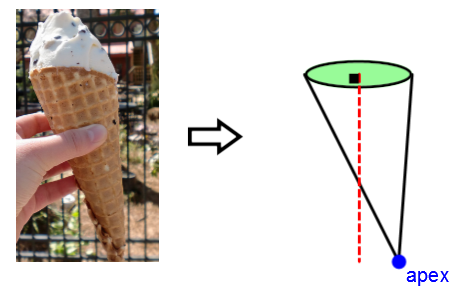The cone is a solid with a curved surface. It can be in the form of a funnel or an hourglass since the latter is a superimposition of two cones.
Cones are solids composed of a single circular base and a single lateral face in the form of a section of a circle whose single vertex is called the “apex”.
By carefully reading the definition of the cone, its main characteristics can be distinguished.
-
The base is a circle
-
The apex is the only vertex of the cone
-
The apothem is the distance between the apex and some point located on the contour (circumference) of the base (not to be confused with the height of the cone)
-
The lateral face is a section of a circle that wraps around its base
The following drawings illustrate the first three characteristics well. To learn more about the lateral face of a cone, consult the concept sheet on Developing and Drawing Cones.

The apex will be used as a reference point to differentiate between these two types of cones.
A right cone is a cone with an apex vertically aligned with the centre of the circular base.
Thus, the resulting structure is much more solid. Some dwellings greatly resemble a right cone.
However, it is not always easy to align the apex and the centre of the base vertically.
An oblique cone is a cone with an apex that does not vertically align with the centre of the base.
In other words, the top of the cone is "offset" from the center of the base. Given the risks of such a construction, its usefulness in everyday life is rather limited.
In the previous example, the apex is shifted to the right relative to the centre of the base. The solid which serves as a waffle ice cream cone is a cone that is more or less an example of an oblique cone.


